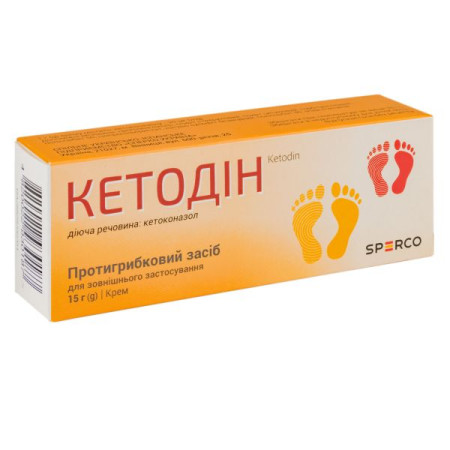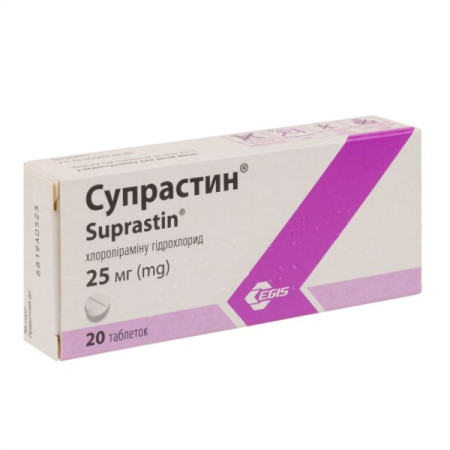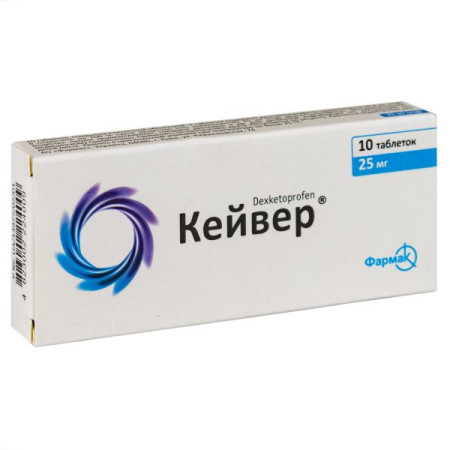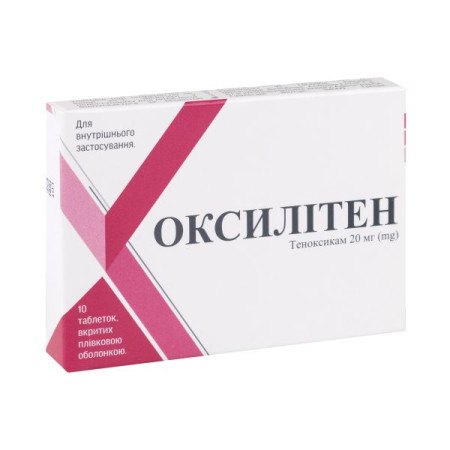Kvamatel film-coated tablets 20 mg blister No. 28

Instructions Kvamatel film-coated tablets 20 mg blister No. 28
Composition
active ingredient: famotidine;
1 film-coated tablet contains 20 mg or 40 mg of famotidine, respectively;
excipients: colloidal anhydrous silica, magnesium stearate, povidone K 90, sodium starch glycolate (type A), talc, corn starch, lactose monohydrate; coating: red iron oxide (E 172), colloidal anhydrous silica, titanium dioxide (E 171), macrogol 6000, sepifilm 003 (composition: macrogol-40 (E 431)), microcrystalline cellulose (E 460), hypromellose (E 464)).
Dosage form
Film-coated tablets.
Main physicochemical properties:
Kvamatel®, tablets, 20 mg: pink, convex tablets, film-coated, marked F 20 on one side. The diameter of the tablets is about 8 mm.
Kvamatel®, 40 mg tablets: dark pink, convex, film-coated tablets, marked F 40 on one side. The diameter of the tablets is approximately 8 mm.
Pharmacotherapeutic group
Drugs for the treatment of acid-dependent diseases. H2-receptor antagonists.
ATX code A02B A03.
Pharmacological properties
Pharmacodynamics.
Famotidine is a potent competitive inhibitor of H2-histamine receptors. The main clinically significant pharmacological action of famotidine is inhibition of gastric secretion. Famotidine reduces both the concentration of acid and the volume of gastric secretion, while pepsin production remains proportional to the volume of gastric juice secreted.
In patients with hypersecretion, famotidine inhibits basal and nocturnal gastric secretion, as well as secretion stimulated by the administration of pentagastrin, betazol, caffeine, insulin, and the physiological vagal reflex.
The duration of inhibition of secretion at doses of 20 mg and 40 mg is 10 to 12 hours. A single oral dose of 20 mg and 40 mg in the evening provides inhibition of basal and nocturnal acid secretion. Nocturnal secretion of hydrochloric acid is inhibited by 86-94% for at least 10 hours. The same doses taken in the morning reduce food-stimulated acid secretion. This suppression is 76-84% of the initial secretion 3-5 hours after administration and 25-30% 8-10 hours after administration, respectively.
Famotidine has little effect on fasting or fed gastrin levels. Famotidine has no effect on gastric emptying, pancreatic exocrine function, hepatic blood flow, or portal blood flow.
Famotidine does not affect the cytochrome P-450 enzyme system in the liver.
No antiandrogenic effect of the drug was observed. Serum hormone levels did not change after treatment with famotidine.
Pharmacokinetics.
The kinetics of famotidine are linear.
Absorption. Famotidine is rapidly absorbed. The oral bioavailability is 40-45%. Bioavailability does not change depending on the presence of food in the stomach, but is slightly reduced when taking antacids.
There is no clinically significant age-related change in the bioavailability of famotidine in elderly patients.
First-pass biotransformation through the liver has little effect on the bioavailability of the drug.
Distribution. After oral administration, the maximum concentration in the blood plasma is reached after 1-3 hours. With repeated administration, there is no cumulative effect. Binding to blood plasma proteins is relatively low and is 15-20%.
The half-life is 2.3-3.5 hours. In patients with severe renal impairment, the half-life of famotidine may exceed 20 hours.
Biotransformation: The drug is metabolized in the liver. The only metabolite identified in humans is the sulfoxide.
Elimination. Famotidine is excreted renally (65-70%) and by metabolism (30-35% of the administered drug). Renal clearance is 250-450 ml/min, indicating some degree of tubular excretion. 25-30% of an orally administered dose and 65-70% of an intravenously administered dose are recovered in the urine as unchanged drug. A small portion of the administered dose may be excreted as the sulfoxide.
Indication
Benign stomach ulcer.
Peptic ulcer of the duodenum (treatment and prevention of relapses).
Hypersecretory conditions such as Zollinger-Ellison syndrome.
Treatment of gastroesophageal reflux disease (reflux esophagitis).
Prevention of the development of symptoms and erosions or ulceration associated with gastroesophageal reflux disease.
Contraindication
Hypersensitivity to any component of the drug.
Cross-sensitivity is observed with drugs of this class. Therefore, Kvamatel® should not be prescribed to patients with a history of hypersensitivity to other H2-receptor blockers.
Interaction with other medicinal products and other types of interactions
No clinically significant drug interactions have been identified.
All drugs that inhibit gastric acid secretion may alter the bioavailability and rate of absorption of some drugs, leading to reduced absorption of atazanavir due to changes in gastric pH. Famotidine may reduce the absorption of ketoconazole and itraconazole when co-administered by increasing gastric pH. Therefore, ketoconazole should be taken at least 2 hours before taking Kvamatel® tablets.
Absorption of Kvamatel® tablets may be reduced by the use of drugs that counteract or neutralize the acidity of gastric juice (antacids), which may lead to a decrease in the concentration of famotidine in the blood plasma. Therefore, antacids should be taken 1 - 2 hours after taking Kvamatel® tablets.
Concomitant use of sucralfate should be avoided within two hours before and after taking famotidine.
The use of probenecid may slow the elimination of famotidine, therefore, the simultaneous use of Kvamatel® tablets and probenecid should be avoided.
Famotidine does not affect the activity of hepatic metabolism enzymes of the cytochrome P-450 group.
Clinical studies have shown that famotidine does not enhance the effects of aminopyrine, antipyrine, diazepam, phenytoin, propranolol, theophylline, and warfarin.
No significant effect was found in the indocyanine green test as an indicator of hepatic blood flow and/or hepatic drug extraction.
In studies involving patients with selected phenprocoumon therapy, no pharmacokinetic interaction with famotidine and no effect on the anticoagulant activity of phenprocoumon were found.
Additionally, studies with famotidine have not shown an increase in expected blood alcohol levels as a result of drinking alcohol.
There is a risk of loss of effectiveness of calcium carbonate, used for phosphate binding in hemodialysis patients, when administered simultaneously with famotidine.
Concomitant use of posaconazole oral suspension and famotidine should be avoided if possible, as famotidine may reduce the absorption of posaconazole oral suspension when administered concomitantly.
Concomitant use of famotidine with tyrosine kinase inhibitors (TKIs) such as dasatinib, erlotinib, gefitinib, pazopanib may result in decreased TKI plasma concentrations and, consequently, reduced efficacy, therefore, concomitant use of famotidine with these TKIs is not recommended. For further additional recommendations, please refer to the Summary of Product Characteristics of the individual TKI-containing medicinal products.
Application features
In case of liver failure, Kvamatel® should be used with caution and in low doses.
If patients have difficulty swallowing or abdominal discomfort persists, it is recommended that they consult a doctor.
Malignant neoplasms of the stomach
Before starting treatment of gastric ulcers with Kvamatel®, it is necessary to exclude the presence of malignant neoplasms in the stomach. Relief of gastric ulcer symptoms as a result of therapy with Kvamatel® does not exclude the presence of malignant tumors of the stomach.
Kidney failure
Since famotidine is mainly excreted by the kidneys, it should be used with caution in patients with impaired renal function. If creatinine clearance decreases below 10 ml/min, a reduction in the daily dose of the drug is recommended (see section "Method of administration and dosage").
Children
The efficacy and safety of the drug in children have not been established. The use of Kvamatel® film-coated tablets is not recommended for children and adolescents.
Elderly people
When famotidine was used in elderly patients during clinical trials, no differences in the frequency or types of adverse reactions were found compared to the general adult population. Elderly age itself does not require dose adjustment.
General provisions
With prolonged use of high doses of the drug, regular blood tests and liver function tests are recommended.
In case of long-term peptic ulcer disease, sudden discontinuation of the drug after symptoms subside is not recommended.
The drug Kvamatel® contains lactose.
In case of lactose intolerance, it should be noted that 1 film-coated tablet of the drug Kvamatel® 20 mg contains 105 mg of lactose, and 1 film-coated tablet of the drug Kvamatel® 40 mg contains 90 mg of lactose. Patients with rare hereditary diseases such as galactose intolerance, total lactase deficiency or glucose-galactose malabsorption syndrome should not use this medicine.
Use during pregnancy or breastfeeding
Fertility
Controlled studies in pregnant women have not been conducted.
Pregnancy.
Breastfeeding. Famotidine is excreted in human milk. Since the effects of famotidine on breastfed infants are unknown and it is possible that it may impair the secretory function of the infant's stomach, nursing women should discontinue use of the drug or discontinue breastfeeding.
Ability to influence reaction speed when driving vehicles or other mechanisms
Some patients have experienced dizziness and headache while taking famotidine. Patients should be advised to avoid driving, operating machinery, or performing activities that require alertness if these symptoms occur (see Adverse Reactions).
Method of administration and doses
The drug is most effective when taken in the evening before bedtime. If famotidine is taken twice a day, one dose should be taken in the morning and the second dose in the evening before bedtime. Swallow the Kvamatel® tablet whole, without chewing, with a glass of water, regardless of food intake.
Gastric and duodenal ulcer (benign)
The recommended dose is 40 mg once daily at bedtime. Duration of treatment is 4-8 weeks.
Prevention of duodenal ulcer recurrence
To prevent ulcer recurrence after achieving a therapeutic effect, a maintenance dose of 1 tablet of 20 mg once a day before bedtime is used. Duration of treatment is 1-4 weeks.
Gastroesophageal reflux disease
1 tablet of 20 mg or 40 mg (depending on the severity of the disease) 2 times a day (1 tablet in the morning and 1 in the evening) for 6-12 weeks.
If gastroesophageal reflux disease is accompanied by erosive esophagitis or ulceration, the recommended dose of Kvamatel® is 40 mg 2 times a day for 6-12 weeks.
Prevention of symptoms and erosions or ulceration associated with gastroesophageal reflux disease (maintenance treatment)
The recommended dose is 20 mg 2 times a day.
Zollinger-Ellison syndrome
The initial dose is usually 20 mg every 6 hours in patients who have not previously received antisecretory therapy. The dose should then be adjusted depending on the patient's condition.
Patients who have previously used another H2-antihistamine can switch to Kvamatel® with a higher initial dose of 40 mg every 6 hours. The dose is adjusted depending on the level of gastric juice secretion, as well as the clinical condition of the patient. The drug should be used as long as there are clinical indications for this. The daily dose can be increased if necessary, depending on the individual characteristics of the patient until the optimal dose is reached. According to literature data, the maximum doses of famotidine used in patients with severe forms of the disease were up to 160 mg every 6 hours.
Kidney dysfunction
Since famotidine is primarily excreted by the kidneys, it should be used with caution in patients with impaired renal function.
If creatinine clearance is <30 ml/min and serum creatinine is >3 mg/100 ml, the daily dose should be reduced to 20 mg or the dosing interval should be increased to 36-48 hours.
Use in elderly patients
No dose adjustment is required based on age.
Children.
The efficacy and safety of the drug in children have not been established. The use of Kvamatel® film-coated tablets is not recommended for children and adolescents.
Overdose
Adverse reactions in case of overdose are similar to those observed in normal clinical practice (see section "Adverse reactions"). Patients with Zollinger-Ellison syndrome have tolerated daily oral administration of famotidine at a dose of 800 mg for more than 1 year without the development of serious undesirable effects.
Overdose treatment
When taking a high dose of the drug orally, gastric lavage, symptomatic and supportive therapy, and clinical observation are required.
Side effects
Famotidine is usually well tolerated.
The following adverse reactions have been reported very rarely or rarely. However, in many cases a causal relationship to the use of famotidine has not been established.
| MedDRA organ systems | Adverse reactions |
| Blood and lymphatic system disorders | Agranulocytosis, leukopenia, pancytopenia, thrombocytopenia, neutropenia |
| On the part of the immune system | Hypersensitivity reactions (anaphylaxis, angioedema, bronchospasm, eye swelling) |
| Metabolism and nutritional disorders | Anorexia |
| Mental disorders | Reversible psychiatric disorders (including depression, anxiety disorders, agitation, disorientation, confusion and hallucinations; insomnia, decreased libido) |
| From the nervous system | Headache, dizziness, dysgeusia, convulsions and grand mal seizures (especially in patients with renal impairment), paresthesia, tinnitus, drowsiness |
| From the organs of vision | Conjunctivitis |
| From the heart | Arrhythmia, atrioventricular block with intravenous administration of H2-receptor blockers, bradycardia, tachycardia |
| Bronchospasm, interstitial pneumonia (sometimes fatal) | |
| Gastrointestinal tract | Constipation, diarrhea, dry mouth, nausea and/or vomiting, abdominal discomfort or bloating, flatulence, stomach pain, acute pancreatitis |
| Liver and biliary tract disorders | Hepatitis, increased liver enzymes, cholestatic jaundice |
| Skin and subcutaneous tissue disorders | Rash, pruritus, urticaria, acne, hair loss, Stevens-Johnson syndrome/toxic epidermal necrolysis (sometimes fatal), xeroderma, erythema, exfoliative dermatitis |
| Musculoskeletal and connective tissue disorders | Arthralgia, muscle cramps |
| Genital and breast disorders | Gynecomastia*, impotence |
| General disorders and administration site conditions | Fatigue, chest tightness, slight fever |
* Rare cases of gynecomastia have been reported, but in controlled clinical trials the incidence was not greater than that of placebo. The effect is reversible upon discontinuation of treatment.
After a medicinal product is registered, it is important to report suspected adverse reactions. This allows monitoring of the benefit-risk balance of the medicinal product. Healthcare professionals are asked to report any suspected adverse reactions.
Expiration date
Kvamatel®, film-coated tablets, 20 mg:
4 years.
Kvamatel®, film-coated tablets, 40 mg:
5 years.
Storage conditions
Store at a temperature not exceeding 30 °C in the original packaging to protect from light.
Keep out of reach of children.
Packaging
Kvamatel® film-coated tablets, 20 mg:
14 tablets in a blister, 2 blisters in a cardboard box.
Kvamatel® film-coated tablets, 40 mg:
14 tablets in a blister, 1 blister in a cardboard box.
Vacation category
According to the recipe.
Producer
Gedeon Richter OJSC, Hungary.
Address
H-1103, Budapest, Demrei Street 19-21, Hungary.
There are no reviews for this product.
There are no reviews for this product, be the first to leave your review.
No questions about this product, be the first and ask your question.


















